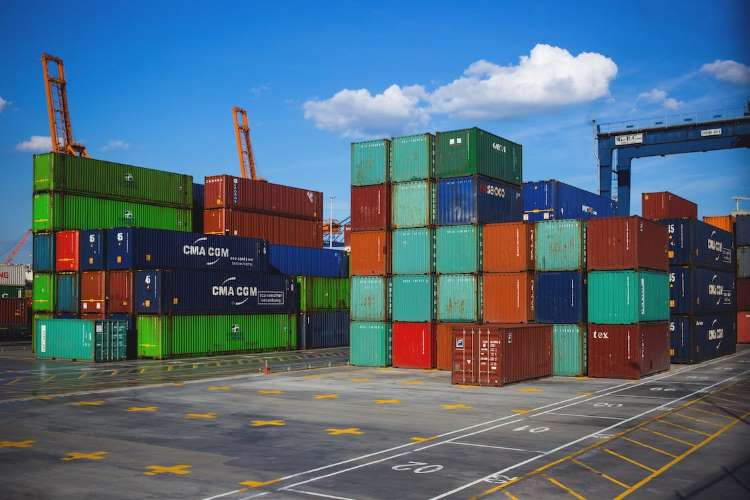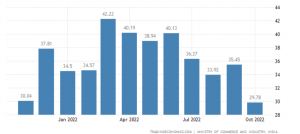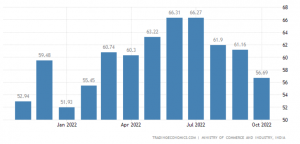
India is looking to bolster its trade with other countries and has signed a number of free trade agreements in recent years. India has inked 13 FTAs with different trading partners so far and in talks with several others. The latest in the series will be held with the European Union in November end. The India EU FTA talks are highly anticipated since these negotiations will come after a nine-year hiatus. However, separate negotiations for an Investment Protection Agreement and an Agreement on Geographical Indications were held in June. Issues related to investment and trade in goods will dominate the agenda of the soon to be held talks.
The European Union is India’s third largest trading partner and it accounts for 88 billion euros worth of trade in goods in 2021 or 10.8% of the total Indian trade. India is the EU’s 10th largest trading partner, accounting for 2.1% of total EU trade in goods. Trade in services between the EU and India reached 30.4 billion euros in 2020. The world is currently facing energy and food crises. The importance of climate change in economic transactions is rising. The negotiations for an India-EU free trade agreement should be seen in this light. These problems make an India-EU FTA all the more important for both the parties.
READ | Rising debt of state governments threatens to derail troubled Indian economy
Agenda for India-EU FTA talks
In the FTA talks scheduled for November, the EU is expected to propose an anti-fraud clause in the goods chapter that deals with preventing, detecting and combating breaches or circumventions of customs legislation related to the preferential treatment. New Delhi and the European Union have already discussed issues including digital trade, government procurement, anticompetitive conduct, merger control and subsidies, state-owned enterprises, dispute settlement, good regulatory practices, energy and raw materials.
India’s exports in the last 12 months ($bn)

India’s imports in the last 12 months ($bn)

India sees FTAs as a major component of its trade and investment ties. Any bilateral trade agreement is advantageous as it helps in expansion of the market for a country’s goods through concerted negotiations between two countries. Nonetheless, it is not just India which is to gain from the bilateral talks. The EU also has several reasons to have close trade ties with India. India is not just the largest democracy in the world but also a significant ally at a time when the world is witnessing a war. India also holds strategic importance due to its proximity to both China and Russia and is situated at a strategically important part of the Indo-Pacific area.
FTAs face opposition
Bilateral trade agreements, however, are seen sometimes as a threat as they can result in the closing down of smaller companies that are unable to compete with large multinational corporations. The Indian dairy industry has been sceptical about bilateral trade agreements and has emphasised how sourcing of milk from other countries may undercut the sector in the country. The periodic assessment of the economic impact of FTAs has shown significant growth in trade with FTA partners.
The EU’s share in foreign investment inflows to India rose to 18% from 8% in the last decade. The European Union is also one of India’s largest sources of foreign direct investment (FDI). On the other hand, there are around 6,000 European businesses in India. In a variety of industries, these enterprises provide 1.7 million direct jobs and 5 million indirect jobs.
Other than the EU, India has signed a number of trade agreements with various other countries or groups to boost trade. In fact, India is among top countries in Asia with the maximum number of FTAs either in operation or under negotiation. For example, India’s ties with the US helped in achieving $157 billion worth of bilateral trade in goods and services.
The United States is also India’s largest trading partner and most important export market. The Indian investment in the United States is also significant and is pegged at $12.7 billion, supporting over 70,000 American jobs. Indian students in the United States contribute $7.7 billion annually to the American economy.
India has already concluded FTAs with Sri Lanka, SAFTA, Nepal, Bhutan, Thailand, Singapore, ASEAN, South Korea, Japan, Malaysia, Mauritius, UAE and Australia. In addition, it has preferential trade agreements with Asia Pacific Trade Agreement, Global System of Trade Preferences, SAARC Preferential Trading Agreement. Afghanistan, MERCOSUR, Chile.

